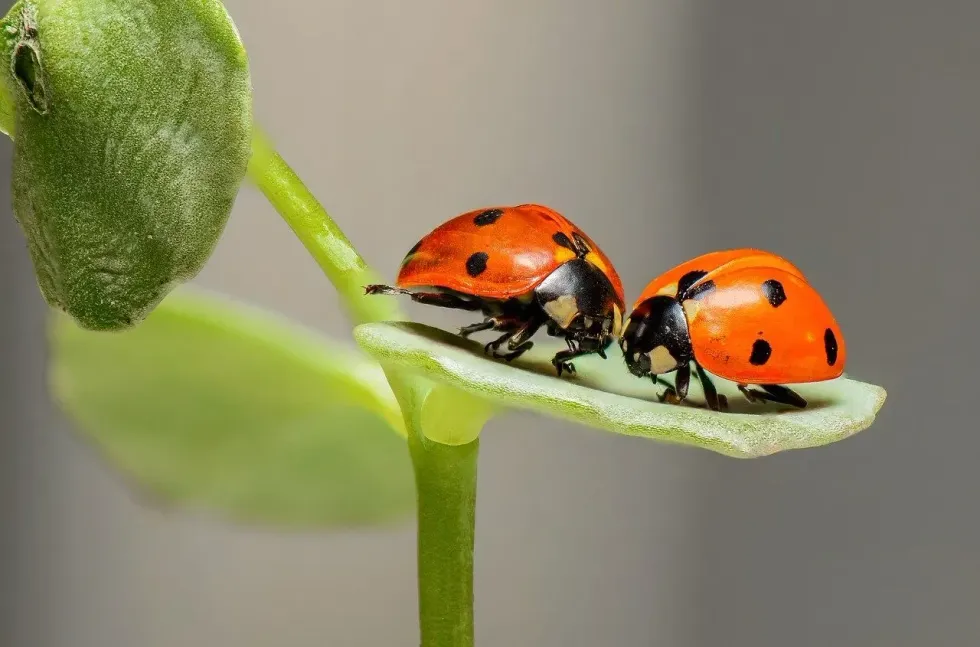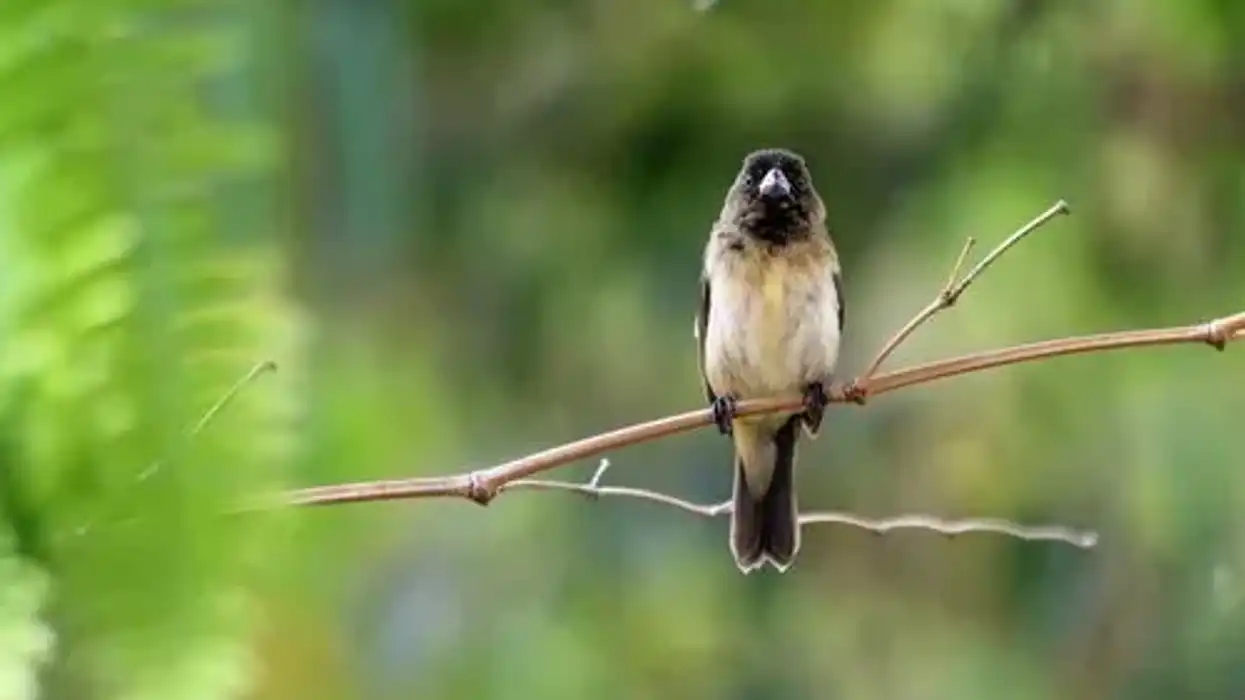Ladybirds are popularly known as ladybugs, and we all must have seen this beautiful tiny insect at least once in our lives. They are widely spread all across the globe.
These insects get most of the attention due to their colorful bodies.
A few years ago the ladybug population was ample, and finding these ladybugs was really easy, but now this insect species is seen a lot less as their population has declined over the years. Ladybird insects have a fascinating story to tell and in this article, we will discuss all that is relevant about these little insects.
As per experts, their markings act as a warning to predators and save these beautiful creatures from being preyed upon. They can come in all sorts of colors and markings such as: orange, black, red and yellow with brown spots.
Ladybird diet comprises of plant pests such as aphids. By consuming plant pests, these predators save numerous plants from damages.
After reading these interesting ladybird facts, do check our other articles on monarch butterfly and giant water bug.
Ladybird Interesting Facts
What type of animal is a ladybird?
A ladybird beetle is an insect of the Coccinellidae family. These tiny beetles can be found on trees or plants as this is where they prefer to live.
These round beetles are dome-shaped and have three distinct pairs of legs. They also come in a variety of colors like black, red, yellow and orange and they always have spots on their bodies.
What class of animal does a ladybird belong to?
A ladybird beetle belongs to the insect class of mammals.
How many ladybirds are there in the world?
There is not enough information available about the current living population of the ladybug species. But fortunately, they are not Extinct, and you can still find these lady beetles in your garden and farms. However, there used to be dozens of ladybugs in a single garden, now the number has reduced to one or two.
Where does a ladybird live?
Ladybird beetles are widely spread all over the globe and ladybugs can be easily found in a garden or a farm. The spend most of the winters in temperate areas where they hibernate throughout the winters.
What is a ladybird's habitat?
Lady beetles make their homes on plants. So, the ladybird habitat can be found anywhere where there are plants and trees. During cold weather, ladybugs hibernate in a secluded place.
Who do ladybirds live with?
Usually, ladybirds live alone. But sometimes ladybugs can gather in huge groups. Also, the majority of the ladybugs lay their eggs in groups.
How long does a ladybird live?
The ladybird life cycle can extend up to two years.
How do they reproduce?
The ladybirds reproduce by sexual reproduction. Every ladybird species have pheromones which help in attracting potential mates. As soon as ladybugs are able to find the mate, the mating begins.
The male will make a grip on the female from behind and copulate. Their copulation can last for two hours or more. After this, their larvae or eggs, are born.
What is their conservation status?
The conservation status of ladybird beetles is currently Not Extinct. The ladybird insect population declined heavily in the past few decades because of habitat destruction and climate change. The biggest reason that these ladybirds are declining in number, is because of climate change.
Ladybird Fun Facts
What do ladybirds look like?
Ladybirds can be easily recognized because of their distinct appearance. The ladybirds are round and dome-shaped and have three pairs of legs. The pattern spots and markings depend on the type of the ladybird species.
There are 5,000 ladybirds species, so that you can see a variety of distinct patterns and colors. These colors include yellow, black, orange and red.
They always have the identifiable marking of spots, too. The head and the legs of the ladybird are black. The colored portion on the back and wings of the ladybug are colored and have seven black spots on them.
How cute are they?
Ladybirds are indeed very cute insects. Their tiny body and colorful covering make them look attractive.
How do they communicate?
It will be fascinating to know that ladybirds use chemical signals, known as pheromones in order to communicate with each other.
How big is a ladybird?
Ladybirds are really small insects. Ladybugs measure up to 0.007-0.70 in (0.01-1.7 cm) long.
How fast can ladybirds fly?
It will be really interesting for you to know that a ladybird can fly at a speed of 37 mph (59 kmph), which is nearly close to the speed of a racehorse.
How much does a ladybird weigh?
Ladybirds weigh around 0.00004 lb (0.0007 oz) grams.
What are the male and female names of the species?
There are no notable or unique names allotted to the male and female species. Ladybugs are simply called male ladybird and female ladybird.
What would you call a baby ladybird?
A baby ladybird is called a ladybird larvae.
What do they eat?
Ladybirds feed on small plant-eating insects, such as aphids. The majority of the diet of these predators consists of aphids. Aphids are harmful to crops, and ladybugs feed on them and in turn protect the crops from such insects. This is why they are special, and important to keep protected.
Are they harmful?
No, not at all. These bright colored insects are actually very helpful as ladybird beetles protect crops from aphids.
Ladybird bugs eat aphids, who eat crops. Therefore, ladybirds indirectly save a lot of crops from being ruined. Also, a ladybug is not poisonous, nor do they bite, so we can say that a ladybird is not at all a harmful insect.
Would they make a good pet?
Yes, ladybirds can be kept as pets. A ladybug doesn’t require that much care and is very easy to catch. But yes, these bright colored pets are temporary pets as their lifespan is short, and also, a ladybug will somehow manage to fly away.
Did you know...
There are said to be 5,000 species of ladybirds known to be present in the world.
Why is a ladybird called a ladybird or ladybug?
The name ladybird was coined in Britain, where the ladybug was known as 'Our Lady's Bird'. The Virgin Mary was officially known as Our Lady. In the painting, she was portrayed wearing a red cape with seven similar spots on it.
What does it mean when a ladybug lands on you?
It is considered lucky if a ladybird lands on someone. It is believed that if a ladybug touches something or someone, then that person or thing will be improved and become better.
Here at Kidadl, we have carefully created lots of interesting family-friendly animal facts for everyone to discover! Learn more about some other arthropods including orb-weaver spider, or house centipede.
You can even occupy yourself at home by drawing one of our ladybug coloring pages.










